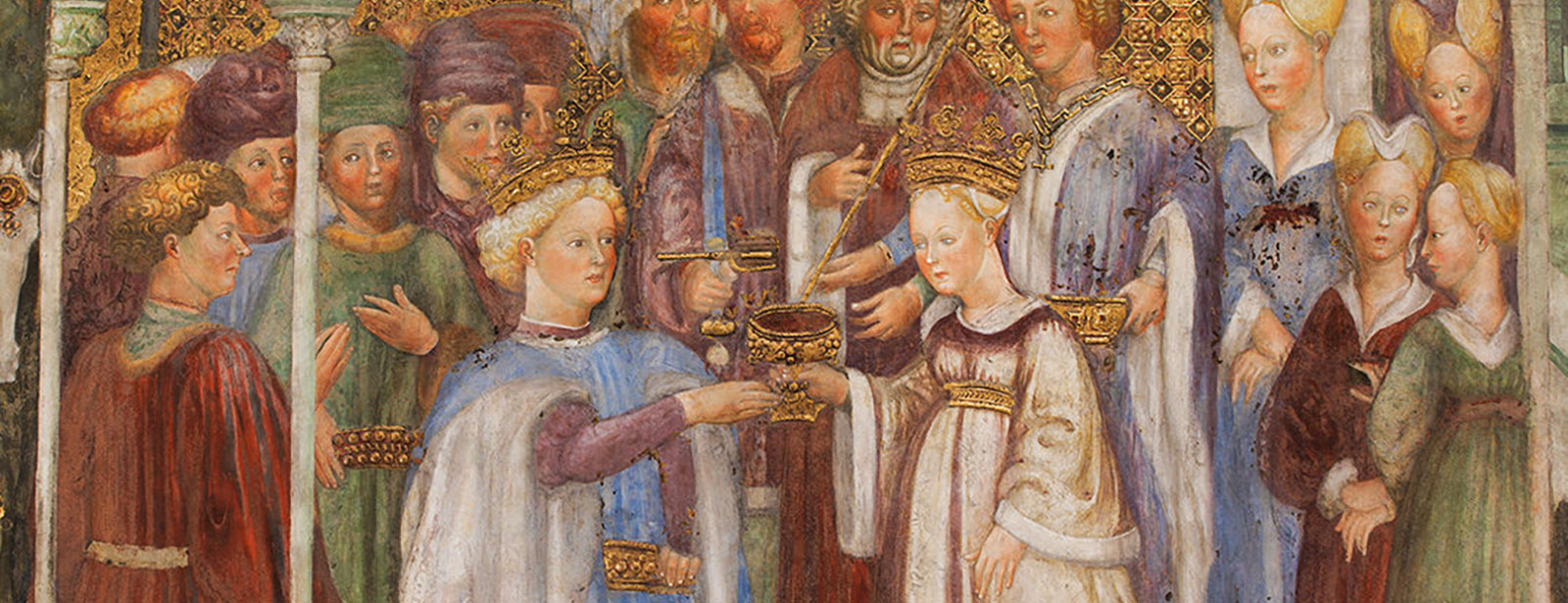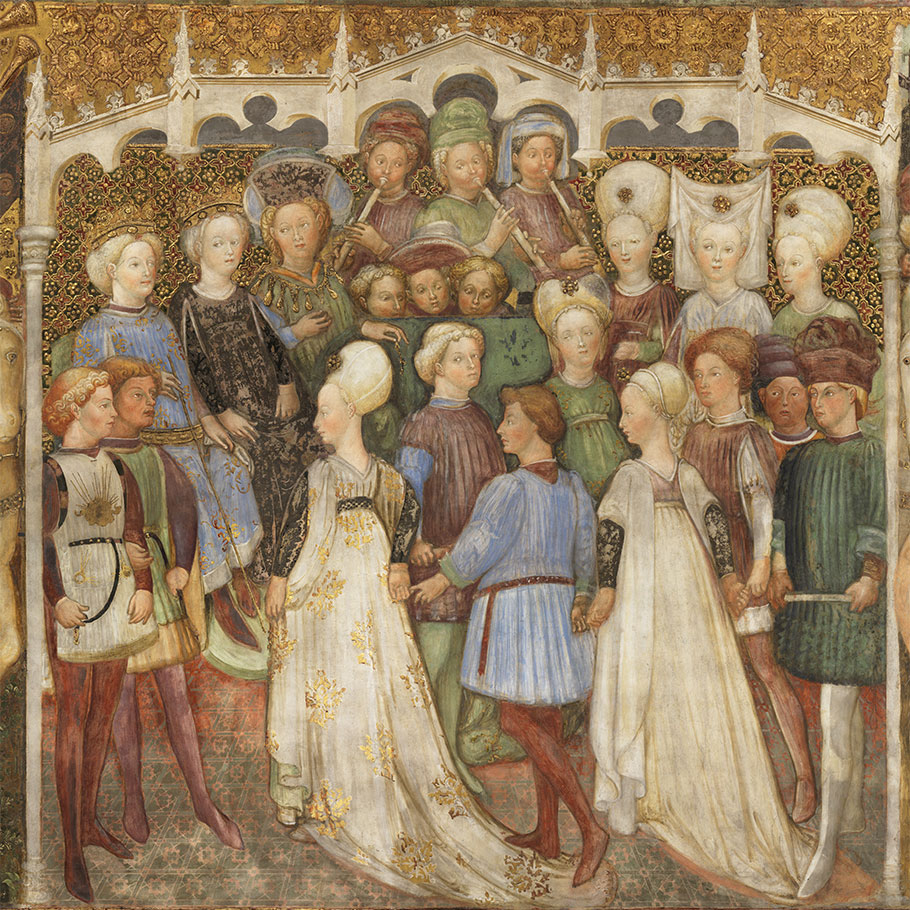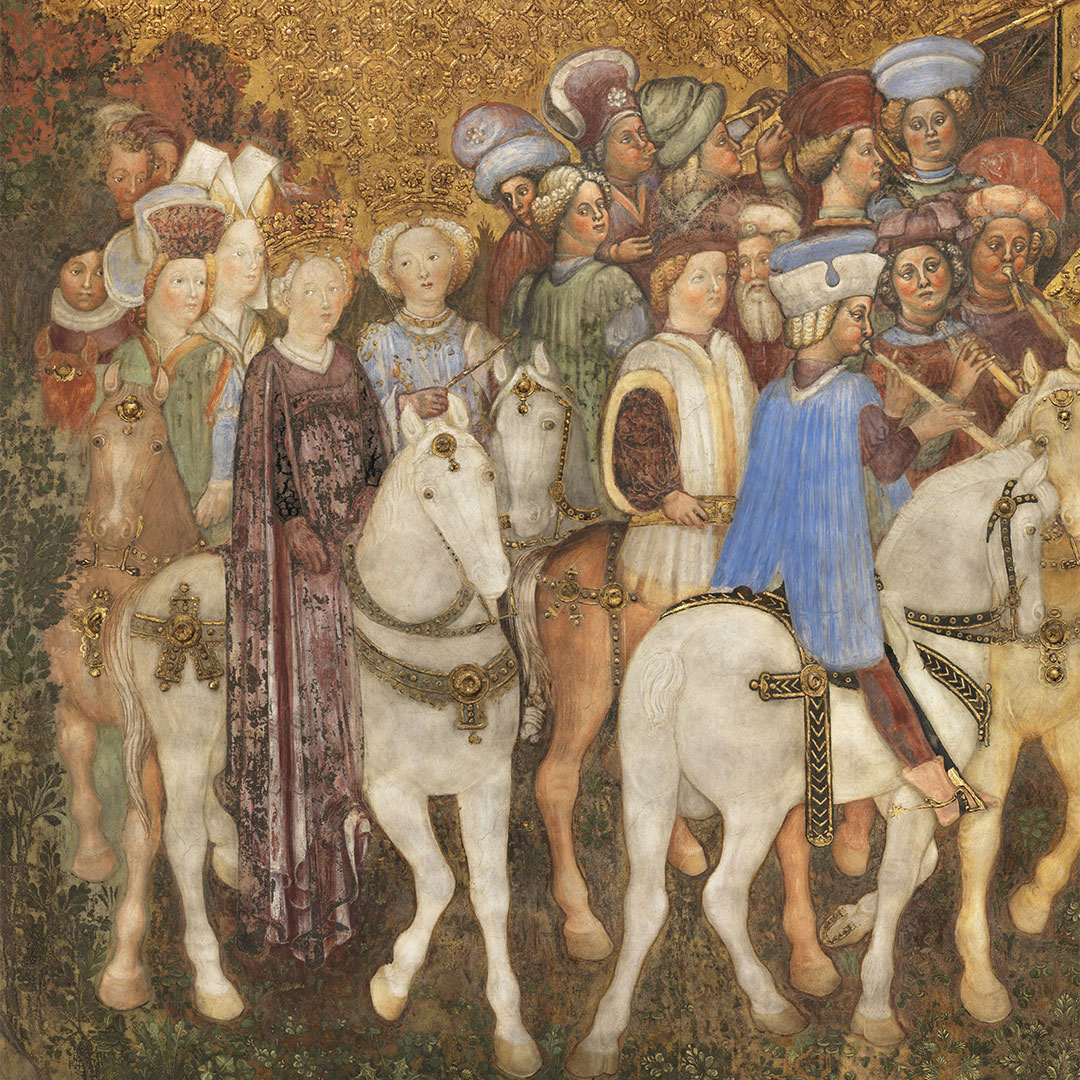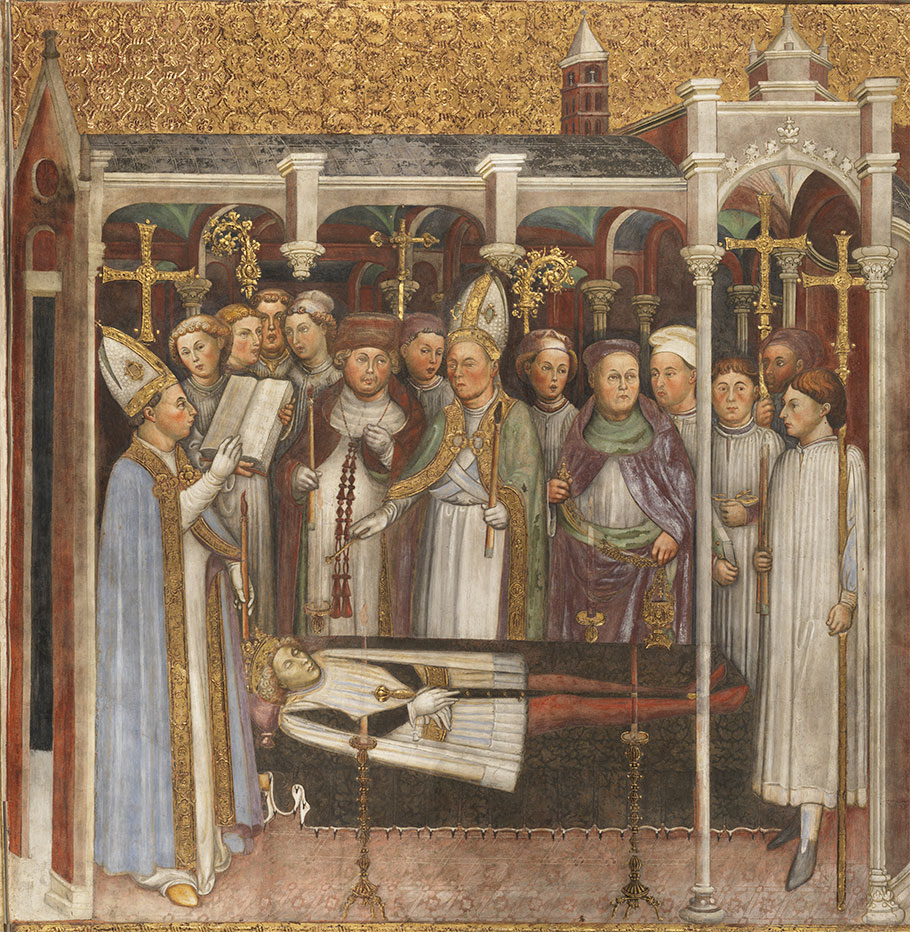Perhaps transmitted through oral sources and lost literary works, the biographical details of Teodolinda were collected in the 8th century by the monk Paul the Deacon, who in his Historia Langobardorum, written for the court of Charlemagne, provided a precise, albeit already mythologized, portrait of the queen.
Born probably around 570 to Garipald, Duke of Bavaria, and Valderada, daughter of Wacone, King of the Longobards from 510 to 540, Teodolinda was betrothed at around eighteen to the young Autari, who in 584 had been elected King of the Longobards. To avoid the threat of an invasion by the Franks, Autari had already arranged to marry a sister of the King of the Franks, Childebert II. However, for political reasons, Childebert II had later broken the agreement and instead married her to a son of the King of the Visigoths.
Following the example of Erwin, the powerful Longobard duke of Trento, Autari then decided to marry a daughter of the Duke of Bavaria in order to strengthen the alliance with this people settled north of the Alps, who were also threatened by the expansionist ambitions of the Franks.
This choice also ensured, in the eyes of the Longobards, an increase in prestige and a stronger base of legitimacy, due to the bride’s descent from King Wacone, the last representative of the Letingi dynasty, which had ruled the Longobard people from the early 5th to the mid-6th century.
The choice fell on Teodolinda, whom, according to Paul the Deacon, Autari wanted to meet before the wedding ceremony. He visited her in disguise, pretending to be an ambassador, at the court of Garipaldo.
The marriage was celebrated on 15 May 589 in the camp of Sardi, near Verona, in the presence of the flower of the Lombard nobility, and was accompanied by the appointment of Gundoaldo, brother of Theodolinda, Duke of Asti: appointment that ensured a solid support in the Piedmont area to Autari, who on this side could already count on the alliance of the Duke of Turin, Agilulfo, decisive for the control of the alpine passes and the development of its political strategy.
After the accession to the throne, Autari had in fact initiated a process of reunion of the Lombard tribes, with the intention of curbing the disruptive tendencies following the death of king Clephi in 574 and relaunching the project of king Alboino, who in 568 had led the descent into the peninsula, to create a vast Lombard state in Italy.
This, however, had triggered the reactions of the Byzantines, the Franks and also several Lombard dukes, who were reluctant to submit to the authority of the new sovereign and therefore had tried in every way to hinder and oppose his actions.
To symbolize this program and to establish a line of continuity with Alboin, after the wedding, the couple took residence in Verona, the preferred residence of the first Lombard king in Italy, as well as a strategically important center for controlling the entry routes into the Po Valley through Bavaria, the Brenner Pass, and Trentino.
In the spring of 590, however, the Frankish army crossed the Alps again and, after besieging Bellinzona and Milan, headed for Verona, forcing the rulers to take refuge in Pavia, where Autari suddenly died on September 5, 590, possibly poisoned, just over a year after the wedding and after only six years of reign, without having been able to defeat the Frankish and Byzantine forces or subdue the rebellious dukes.









